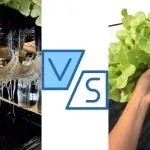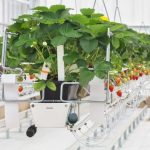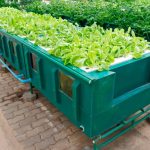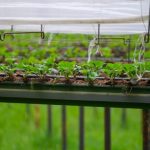Aeroponics is an innovative method of growing plants in which the roots are suspended in the air and nourished through a fine mist containing essential nutrients. As you venture into the fascinating world of aeroponics, it’s crucial to understand the two main systems: high pressure and low pressure aeroponics. In this article, we’ll explore the differences and benefits of high pressure vs low pressure aeroponics to help you make informed decisions about your gardening journey.
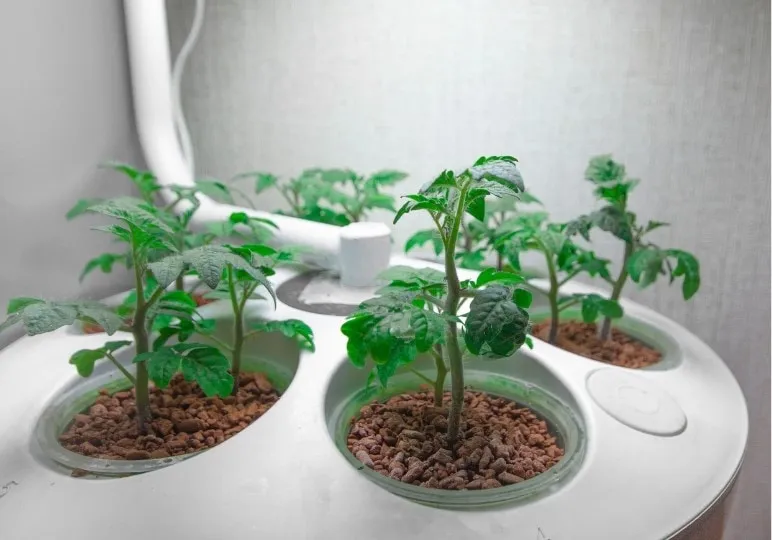
High pressure aeroponics (HPA) typically uses a mist of 20-30 micrometers or microns to deliver nutrients to the plant roots. Ranging from 50psi to 100psi, the pressure may vary based on whether it’s a small-scale or commercial project. On the other hand, low pressure aeroponics focuses on delivering a high volume of nutrient solution at low pressure. While both systems rely on nutrient-rich mist to feed the plants, they differ in the approach to nourishing the roots.
As you continue reading, we’ll dive deeper into the advantages and disadvantages of each system and help you determine the best fit for your gardening needs. With a clear understanding of high pressure vs low pressure aeroponics, you’ll be able to nurture thriving, healthy plants in an efficient and sustainable manner.
Understanding High Pressure Aeroponics
In a high pressure aeroponics system, you’ll make use of high pressure pumps, ideally over 80 psi, to create a fine mist of nutrient solution. This mist is then sprayed onto the plant roots to provide the plants with water, nutrients, and oxygen. Since the particles are so small, the roots can easily absorb the nutrients, promoting rapid growth and minimizing the amount of nutrient solution needed.
Efficient Water and Nutrient Use
A significant advantage of using high pressure aeroponics is the reduction in water and nutrient consumption. As a result of the fine mist created, the plants can absorb nutrients more efficiently, reducing nutrient waste, and saving water due to the low amount needed. Additionally, this approach helps prevent diseases and pests that might be facilitated by pooling water in traditional systems.
Nozzles and Misting
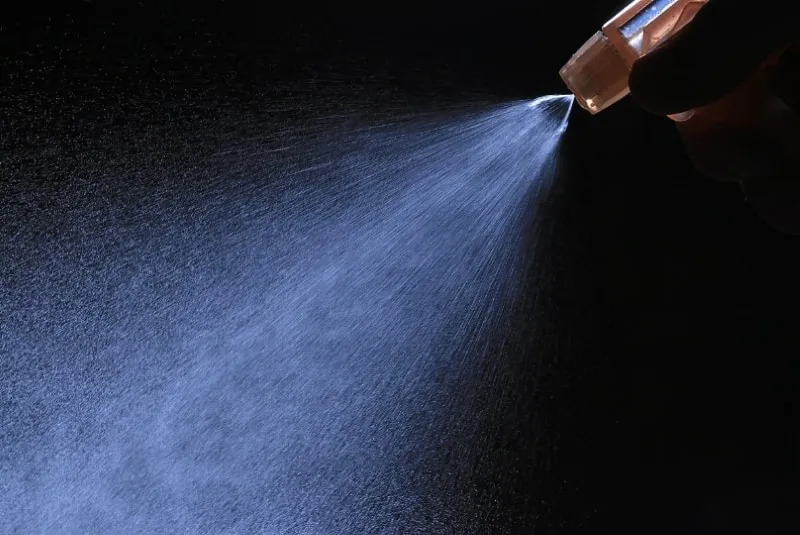
The high pressure in the aeroponics system is responsible for generating the fine mist that delivers nutrients to the plants. To achieve this, you’ll need specialized nozzles for optimum performance. These nozzles create micrometers size droplets, allowing the roots to absorb the nutrients with ease. The roots are also well oxygenated because of this. Make sure to select nozzles suitable for your system and maintain them regularly to prevent clogging or damage.
NASA and Research
NASA has recognized the potential of high pressure aeroponics systems for space agriculture and has been conducting extensive research on this technology. The goal is to develop systems that can grow fresh produce efficiently and sustainably in space, provide astronauts with a balanced diet, and improve the overall health and well-being of the crew members.
To set up a high-pressure aeroponics system, you will need components such as high-pressure pumps, accumulator tanks, electric valves, and pressure valves. Keep in mind that these systems can be expensive and require some technical know-how. However, with dedication and research, you may be able to create a DIY setup that suits your needs.
So, consider high pressure aeroponics as an innovative approach to growing your plants, using a technology that maximizes efficiency and has promising applications in research and space exploration.
Understanding Low Pressure Aeroponics
Low pressure aeroponics (LPA) is a variation of aeroponic systems that operates at a relatively lower pressure than high pressure aeroponics (HPA). This method utilizes a hydroponic approach where plants receive nutrients in the form of fine mist, enhancing plant growth and yields at more affordable costs. This system is beginner-friendly, easy to maintain, and efficient in water usage. With proper low pressure aeroponics spray timing, this method delivers nutrients in a consistent manner for optimum plant growth.
LPA Systems and Components
An LPA system consists of a root chamber that houses the plant and a low pressure aeroponics pump to deliver nutrients in the form of mist. Misting nozzles strategically placed within the chamber create a nutrient-rich mist that covers the plant roots. Monitoring and controlling the system is essential to ensure efficient plant growth.
Components of an LPA system include:
- Root chamber
- Submersible pump
- Misting nozzles
- Nutrient solution
- Timer for controlling misting cycle
Misting Cycle and Droplet Size
The misting cycle is a critical aspect of LPA systems. A proper misting cycle ensures that the roots have access to nutrients and oxygen, promoting growth. The misting cycle is controlled by a timer, which should be set according to the plants’ specific requirements.
Droplet size also plays a vital role in LPA systems. Micro-droplets, typically ranging from 50 to 100 microns, allow for efficient water and nutrient delivery without oversaturating or drowning the roots. The right low pressure aeroponics nozzle should be used to deliver the right droplet size.
Since the water droplets are larger than those in high pressure systems, they aren’t immediately absorbed by the roots. Therefore some droplets will fall off before being absorbed. To reduce waste, this excess nutrient solution is collected in the reservoir underneath.
Submersible Pump and Water Usage
A submersible pump is a key component in LPA systems. It is responsible for delivering nutrient-rich water to the misting nozzles and ensuring that the misting cycle runs smoothly. Choosing the right pump is crucial as it significantly impacts water usage and overall system efficiency.
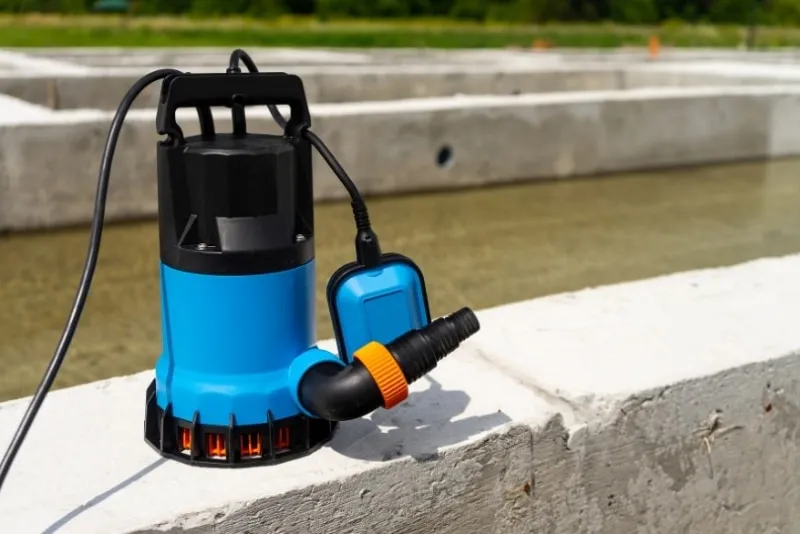
Is aeroponics better than hydroponics? LPA has comparatively higher water usage than HPA but lower usage compared to traditional hydroponic methods, making it a more sustainable choice for cloning and growing plants for hobbyists and small scale operations. It is important to select a pump that delivers the appropriate flow rate and pressure to ensure that your system delivers the right amount of mist to the roots. You should also allow the excess nutrient solution to collect in the reservoir below for reuse.
With these key aspects in mind, you can successfully set up and maintain a low pressure aeroponics system that encourages plant growth, while saving water and keeping costs low.
Related: What is aeroponic gardening? Find out from our comprehensive guide.
Comparison of High and Low Pressure Aeroponics
Crop Yields and Plant Growth
In high pressure aeroponics (HPA) systems, the fine mist created through higher pressures, usually around 100 PSI in smaller systems, provides roots with optimal nutrient absorption and better oxygenation, promoting faster growth and higher crop yields. On the other hand, DIY low pressure aeroponics (LPA) systems usually operate around 25 PSI, generating larger water droplets. While this still produces decent crop yields, it may not be as efficient as HPA systems for root nutrient absorption and plant growth.
System Maintenance and Costs
Maintenance of an HPA system can be more involved due to its complexity. The fine mist produced relies on smaller nozzles, which can be prone to clogging and require regular cleaning. In LPA systems, larger droplets are produced and consequently lower the risk of nozzle clogging, reducing maintenance and cleaning efforts. Additionally, HPA systems have higher upfront and ongoing operating costs, whereas LPA systems tend to be more cost-effective and budget-friendly.
Energy and Water Efficiency
HPA systems are known for their water and energy efficiency. The fine mist produced through higher pressure optimizes nutrient distribution and requires less water overall. However, HPA systems may be more susceptible to issues such as pump malfunctions and power outages, which can pose risks to plant health. Low pressure aeroponics may not be as energy and water-efficient as HPA but can still offer water savings in comparison to traditional growing methods. Moreover, the lower pressure in LPA systems may better withstand temporary power outages.
Equipment and DIY Considerations
If you want to build your own aeroponics system, the equipment and setup process for LPA is generally simpler and more beginner-friendly than HPA systems, which have a steeper learning curve. LPA allows you to start small and upgrade as you gain experience. This applies to building your own vertical aeroponic tower too. Adjusting humidity, temperature, and nutrient ppm is more manageable in LPA systems. Keep in mind that while LPA may be a more accessible option for beginners, it might not deliver the same level of crop yields and plant growth as high pressure aeroponics.
The Role of Environmental Factors
Humidity and Temperature
When it comes to aeroponics, controlling humidity and temperature in your growing environment is critical. For optimal plant growth, maintain an ideal balance between temperature and humidity levels. Too high or too low humidity can have adverse effects on your plants, such as increased risk of mold growth, nutrient deficiencies, and reduced growth rate. Similarly, temperature also plays a vital role in plant metabolism and nutrient uptake. Make sure to monitor and adjust your temperature within the recommended range for the specific plant species you’re growing.
Atmospheric Pressure and Winds
In aeroponics, atmospheric pressure and winds can influence the efficiency of the high pressure or low-pressure systems. In areas with steady winds, you may need to protect your setup from potential damages, such as collapsing plants or disrupting the nutrient delivery process. A well-ventilated growing space promotes healthy plants and better nutrient uptake. However, strong winds can lead to uneven distribution of nutrients and excess evaporation of water droplets, which can impact the growth and health of your plants.
Setting Up and Monitoring Your Aeroponics System
Choosing the Right Equipment
To set up your aeroponics system, you need to select the appropriate equipment. Start with choosing between high-pressure (HPA) and low-pressure (LPA) aeroponic systems. HPA systems mist water droplets of 50 microns or less in diameter, operating at pressures above 80 PSI, while LPA systems work at lower pressure levels and produce larger droplets. HPA systems are more advanced and efficient, but also more expensive, so consider your budget and skill level before making a decision.
For your system, you will need a reservoir for storing the nutrient solution, a pump for delivering it to the roots, and misting nozzles for spraying the solution onto the root zone. Be sure to select a pump and nozzles suited for your chosen pressure levels. Additionally, you’ll need a root chamber to house your plants and support their growth.
Nutrient Solutions and pH
The nutrient solution stored in your reservoir is critical for proper plant growth in an aeroponics system. Make sure to provide your plants with all the essential minerals they need and maintain an appropriate pH level for optimal uptake. Generally, a pH range of 5.5-6.5 is suitable for most plants, including tomatoes.
Keep in mind that aeroponics systems require frequent monitoring and adjustment of nutrient solution concentrations and pH. This is even more important if you use a low pressure system where nutrient solution runoff falls back into the reservoir. Investing in a quality pH and EC meter will help you maintain the appropriate balance for healthy plant growth.
Regularly inspect your misting nozzles for clogs and maintain proper pressure levels throughout the system.
Dealing with Pests and Diseases
Aeroponics systems can be more resistant to pests and diseases due to the absence of soil. However, it’s important to stay vigilant and address any issues early on. Routinely inspect your plants for signs of pests or diseases and keep your root chamber and equipment clean. Managing the humidity and temperature within the root chamber can prevent mold and bacterial growth, so equip your system with a humidity and temperature sensor for accurate monitoring.
If you encounter pests, opt for natural or organic pest control methods, such as introducing beneficial insects, to avoid harming your plants or introducing chemicals into the system.

